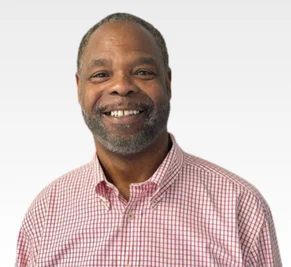Discover the signs & symptoms of substance abuse, and learn more about your personal options for treatment.
Substance use disorders (SUDs) are a big problem in the U.S. Drug and alcohol abuse causes serious harm. The number of lives lost to addiction is overwhelming, signaling a pressing need for action.
At least 21 million people in the country have some form of addiction. However, only about 10% get the help they need. Some of the most commonly misused substances causing the addiction crisis in this country are alcohol, marijuana, cocaine, prescription opioids, benzodiazepines, and methamphetamine.
Alcohol may still be the most widely consumed substance, but opioids have recently been dominating headlines. Opioids are misused by around 10 million people each year, and the consequences are tragic. Every year, approximately 50,000 people lose their lives to opioid overdoses, and fentanyl causes nearly 20% of those deaths.
Research shows about 3.8% of Americans have opioid use disorder. Shockingly, seven out of ten overdose deaths involve opioids. Synthetic opioids like fentanyl are behind about 68%.
To make real progress in solving this crisis, we need to understand the problem better. We also need to know how well the treatment options work.
Substance abuse treatment includes strategies that addiction experts use to help you overcome substance use disorder. Substance abuse treatment focuses on giving you the tools, support, and guidance you need to move forward. The goal is to help you not just stop using substances but also learn relapse prevention skills for long-term recovery. The path isn’t one-size-fits-all; the right approach depends on your unique situation and needs.
One option is a residential treatment program. In this setting, you stay at the treatment center. You have support around the clock. This helps you focus on your recovery. For some people, outpatient care may be a better choice. It lets you get help during the day and return home at night. Some programs combine the best of both worlds.
They include partial hospitalization and intensive outpatient options. These programs offer a structured schedule. They also provide the flexibility to fit your life. On your journey, you may find support groups like Alcoholics Anonymous (AA) or Narcotics Anonymous (NA) helpful. These groups let people share their experiences. They help hold each other accountable. They also remind you that you are not alone in this process.
The demand for treatment is high, but the reality is that access remains a challenge for many. Take a look at the numbers. An estimated 54.2 million Americans aged 12 and older needed treatment for a substance use disorder at some point during the year. However, only 12.8 million of them received the help they needed. These numbers are not just statistics. They show real lives, struggles, and gaps in the system. Many people cannot get the care that could change their lives.
Substance abuse is using drugs in ways not approved by doctors. It can also mean using drugs for fun, like to feel pleasure.
The National Institute on Drug Abuse defines addiction as a strong urge to use drugs. This happens even when it leads to harm.
The term is not an official diagnosis. It is not included in the DSM-5. The DSM-5 is the Fifth edition of the Diagnostic and Statistical Manual of Mental Disorders.
The DSM-5 combines substance abuse and dependence into one category called substance use disorder. This disorder is classified as mild, moderate, or severe. Symptoms fall into four main areas: impaired control, social impairment, risky use, and pharmacological effects like tolerance and withdrawal.
Different types of substances can change how the brain works. This leads to different levels of addiction. Understanding these substances can help you on your path to recovery.
Substance use can take many forms, and each type presents unique challenges. According to the Cleveland Clinic, some common substances fueling addiction include:
Each substance comes with unique risks, and the effects can be especially unpredictable in cases involving polysubstance use disorder.


The focus of substance use disorder treatment is multi-faceted. The primary aim is to help you stop using drugs or alcohol and achieve a sustainable, healthy, and balanced life.
The path to substance use disorder recovery is unique for everyone. Drug addiction treatment usually follows steps that meet your specific needs. These steps depend on the type of substance and the treatment program you select. The standard stages in most treatment programs:
Before you start treatment, the treatment team will do a thorough assessment. This step is very important.
It helps your treatment team see how serious your addiction is. They can also learn about your overall health. Additionally, they can find out if you have other mental health issues, like depression or PTSD.
A good assessment can help rehabilitation professionals create a treatment plan just for you. This ensures you get the right support for your needs.
Drug detox is essentially the body’s natural method for eliminating harmful substances. In a rehab facility, this often means a drug detox program.
It is a medically supervised process. This process includes various treatments, such as medications and therapies. Medical detox focuses on withdrawal management, molding the stage for other treatment settings.
In a drug treatment program, behavioral therapy options and counseling become a crucial part of your journey. You may work directly with a psychologist, psychiatrist, or licensed counselor. They can help you through the process.
Sometimes, therapy includes your family. It helps rebuild trust and strengthen relationships. This can improve the social, mental, and emotional health of everyone in the family. Group sessions are also an option, allowing you to connect with others in your shoes.
Your treatment team may suggest medication for your rehab program. They will help you pick the right one for your needs.
Medication management is prevalent with opioids or alcohol. Medication doesn’t “fix” addiction, but it can help with recovery. It can lessen cravings and reduce withdrawal symptoms. This support can help you stay on track.
For opioid use disorder, medication-assisted treatment (MAT) options may include:
For alcohol use disorder, the following medications are often used:
These medications work best with therapy, counseling, and other recovery supports.
Recovery doesn’t end when treatment does—it’s an ongoing journey. Aftercare is the bridge that helps you transition from structured treatment to everyday life while staying focused on your progress. This stage involves creating a plan for long-term recovery tailored to your needs and goals. Aftercare programs offer ongoing support through:
The goal of aftercare is to give you the tools and support you need. This helps you keep the progress you’ve made. It also helps you build a life without substance use.
Our caring professionals are standing by around the clock, ready to address all your questions.
Everyone’s path is different, so what helps one person might not help another. There are many ways to get treatment, and sometimes, using a mix of evidence-based methods can work best for you.
Behavioral therapy includes different strategies aimed at helping you adjust behaviors that affect your mental, social, and emotional health. The core belief here is that behaviors are learned and can be modified as time progresses. With your mental health professional’s help, you will identify the thoughts and actions related to substance use. You will work on replacing them with healthier, more positive habits.
During your sessions, your therapist will:
CBT is a focused approach that helps you pinpoint and challenge the negative thoughts and behaviors tied to addiction. Recognizing these patterns helps reshape your thoughts and reactions to stress or triggers. The goal is to equip you with healthier coping strategies to support your recovery.
Here’s what CBT can help you with:
Motivational Enhancement Therapy (MET) is based on motivational psychology. It aims to inspire quick, self-driven change. Instead of guiding clients through every step of their recovery, this approach uses motivational techniques. It helps clients find their own strengths and resources.
MET typically includes four tailored treatment sessions. The first two sessions focus on giving clear feedback from the initial assessment. They also discuss future goals and look at the client’s motivation for change.
The last two sessions happen around the middle and end of treatment. They let therapists celebrate the client’s progress. Therapists can suggest a reassessment and provide an outside view on the change journey.
Common types of 12-step groups include Alcoholics Anonymous (AA), Cocaine Anonymous, Depression Anonymous, and Narcotics Anonymous (NA). The main goal of a 12-step program is always the same: to support those who are struggling with addiction. While each program may have its own approach, the process generally follows a series of steps and objectives that members work through. According to the American Psychiatric Association, here are some common steps you’ll encounter in the 12-step process:
Medication-assisted treatment is a full treatment method. It mainly uses FDA-approved drugs. These drugs help people with drug or alcohol problems. A well-structured MAT program strikes the right balance between drugs and behavioral therapy to help treat addictions.

We know that cost is a major factor for most people when seeking treatment for drug & alcohol abuse in Virginia. Novara Recovery Center works with most major insurance plans to help cover up to 100% of the costs associated with treatment at our program. To find out your personal options for treatment, get a free verification of insurance benefits right now by clicking the button below.









The right program can make all the difference in your success. Here are a few factors to think about when making your decision:
The substance you’re struggling with plays a big role in determining the treatment plan. For example, opioid addiction and polysubstance use disorder may require medication-assisted treatment (MAT). In contrast, alcohol use disorder might be better treated with behavioral therapy or 12-step programs.
Many people with substance abuse also have mental health issues, such as depression. It’s important to choose a program that helps with both substance use disorders (SUD) and alcohol use disorders (AUD). This ensures that all aspects of addiction are addressed.
It should also consider any mental health issues. This can greatly improve the chances of long-term recovery.
Not all treatment programs are the same, and that’s a good thing because everyone’s journey is different. Think about what works for you:
The best approach is choosing a treatment approach that suits your daily life and helps you reach your recovery goals.
When picking a drug rehab center, location is important. Being near family and support can help your recovery. It keeps you motivated.
Cost is another critical factor—look for a program that offers quality care within your budget. It’s a good idea to see if your insurance will cover the treatment to help minimize your out-of-pocket costs. Aim at finding the right balance between affordability and access.
While no program can guarantee results, seeing how others have benefited can help you know what to expect. Examine any endorsements or comments left by program participants.
Success rates can give helpful information about how well the program works. However, it is important to remember that each person’s path to recovery is unique. Try to find a program that matches your goals. Look for one that has a good record of caring for people and achieving positive results.
At Novara Recovery Center, we use a holistic approach to treat addiction. We focus on every part of your recovery: body, mind, and spirit. We also consider the influences of family, friends, work, and society.
Our addiction treatment and recovery services include a 45-day intensive course and a standard 90-day inpatient rehabilitation. They are designed to help you return to your loved ones. You will become a stronger and more self-aware person. You will also gain a renewed sense of purpose and commitment to your well-being and that of others.
Even after you finish your treatment, we keep supporting you and your family. We help you stay on track for lasting sobriety. Take the first step toward a brighter future—call us today at (703) 705-7870, email info@novararecovery.com, or visit us at 2815 Old Lee Hwy Floor 2, Fairfax, VA 22031.
Written By:

Mental Health Writer
Geoffrey Andaria is a seasoned writer and editor specializing in mental health content. With a B.A. in English and Journalism, he possesses a solid foundation in crafting freelance articles and conducting research. Geoffrey has also completed courses in social work. He dedicates himself to providing valuable and informative content for individuals impacted by mental health challenges and addiction.
Medically Reviewed By:

Expert Contributor
Dr. Williams is currently a board member for two non-profit service organizations. He holds a Master’s degree in Human Services from Lincoln University, located in Philadelphia, Pennsylvania.
He possesses a Ph.D. in Clinical Psychology from Union Institute and University, located in Cincinnati, Ohio. He holds a license to offer addiction counseling in both New Jersey and Connecticut. Additionally, he has submitted an application to become a licensed psychologist in New Jersey.






2815 Old Lee Hwy Floor 2, Fairfax, VA 22031